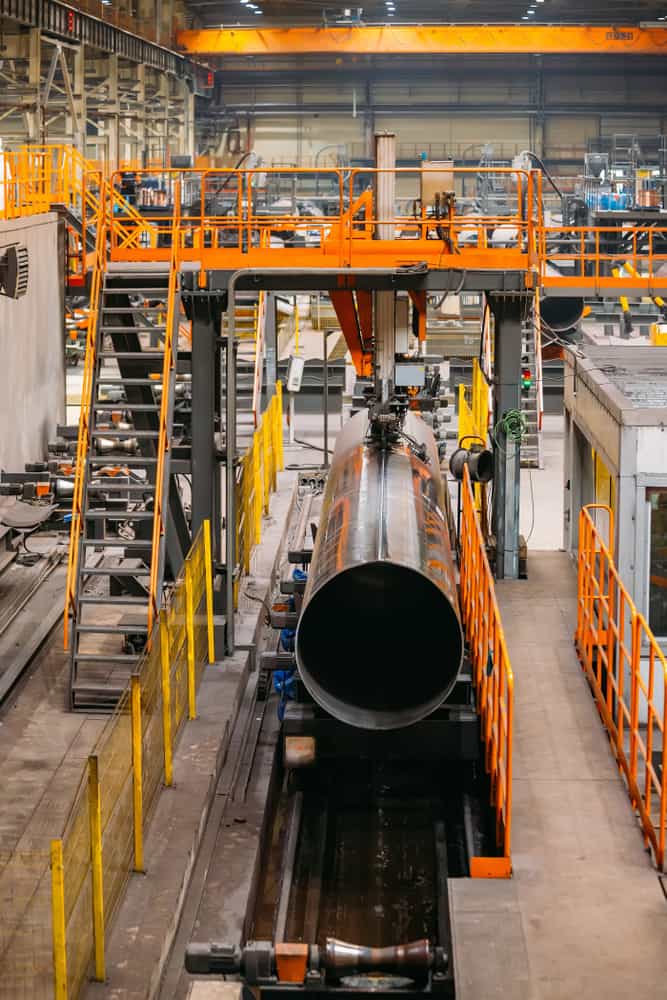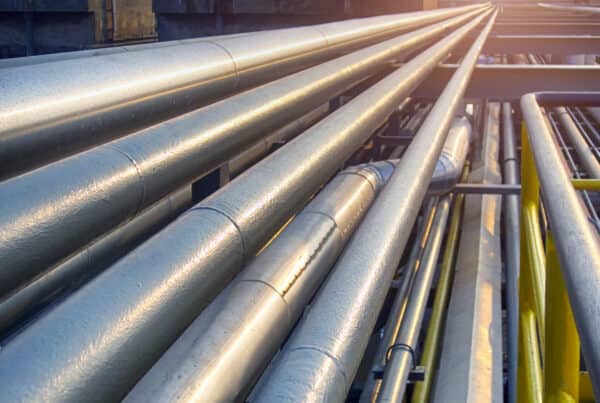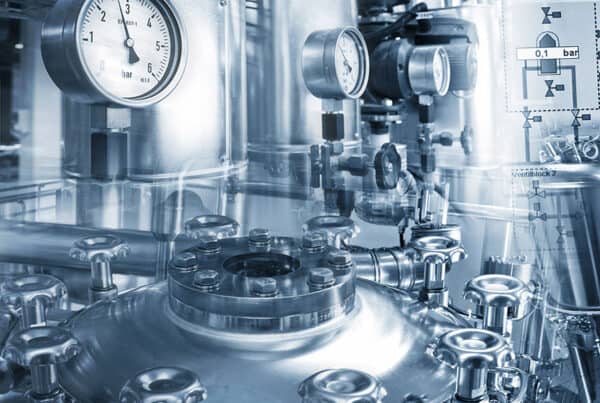
Industries like oil and gas routinely employ the welding process for fusing pipes. However, the complexity of pipe welding makes it one of the most challenging processes. In welding the pipe circumference, factors from arc positioning error to manual fatigue can contribute to the welding errors that include poor bonding in the joint, porosity, and cracking. Weld parameter optimization, ideal weld head positioning, and remote monitoring can help minimize these potential pipe welding risks. Processes like automated gas tungsten arc welding (GTAW) make it possible to achieve the high-quality welds required to maintain industrial welding standards.
Automated Pipe Welding System
An automated pipe welding system, such as the orbital welding system, uses advanced, automated technology to optimize and control the weld along the circumference of the pipe. The mechanized system facilitates weld parameter optimizations for feed rate, voltage, weld speed, and more to deliver highly controlled and consistent welds.
Automated pipe welding systems can be classified as follows:
Flux Core Arc Welding (FCAW): This process utilizes a continually fed wire electrode filled with flux to generate an arc. As heat is generated, the flux bonds with impurities and floats on the top of the weld pool, creating a pure weld. The continuous wire feed allows for faster welds and a high production rate. However, porosity can become a problem, as gases may be trapped in the weld pool as it solidifies. The slag formed during the weld also needs to be removed after every deposition to avoid defects due to inclusions.
Gas Metal Arc Welding (GMAW): This welding process ensures arc formation with the help of a continuously fed wire electrode and a supply of inert shielding gas. The gas shield prevents weld contamination. Also known as metal inert gas (MIG) welding, the process is relatively quick compared with other welding processes. The gas shielding utilized in the weld, however, can be compromised by external factors, allowing contaminants to degrade the purity and strength of the weld.
Gas Tungsten Arc Welding (GTAW): This process utilizes non-consumable tungsten electrodes for arc formation and inert gas shielding to prevent oxidation and contamination. Also known as tungsten inert gas (TIG) welding, this process can be time-consuming compared to FCAW or GMAW. However, GTAW’s slower speed and constant power supply can produce cleaner, stronger, and higher-quality welds.
As noted, the FCAW or GMAW welding processes can give rise to weld defects such as lack of fusion, porosity, and slag inclusions. If such defects go undetected in pipeline systems, they can lead to harmful leaks that could threaten ecosystems and human lives. A consistently high-quality automated GTAW process can help prevent these defects from occurring.
Automated GTAW Provides Control in Welding
The efficiency of automated GTAW processes has made it the first choice for pipe welding across industries. Various pipe welding challenges can be minimized with the high degree of control provided by automated GTAW. Along with control, the automated process can also be relied on for:
- Repeatable output.
- Improved purity and quality of the weld.
- Reduced risk of error resulting from human limitation.
- Waste reduction.
- Improved productivity.
Automated pipe welding systems, such as orbital GTAW, allow technicians to optimize the weld parameters to achieve ideal welding results. Additionally, orbital weld heads offer a controlled weld with each pass along the mounted tracks spanning the circumference of the pipe. With the support of a remote monitoring system, welders can remotely track the progress of the weld and detect any deviations. An orbital GTAW process can be trusted to perform high-purity and high-quality welds in the most critical pipeline systems.
Improved Quality With Automated GTAW
Industries like oil and gas that depend on pipeline systems and the regular repair and maintenance they require can leverage the many advantages provided by an automated GTAW process to reduce the chances of defect-induced hazards. Manufacturers, likewise, can depend on automated GTAW to improve productivity with increased speed and cost-savings.
Arc Machines, Inc. is a leader in automated GTAW technology. We offer a wide range of auto weld heads and monitoring systems for your automated pipe welding systems. For inquiries regarding products, contact sales@arcmachines.com. For service inquiries, contact service@arcmachines.com. Contact us to arrange a meeting.




